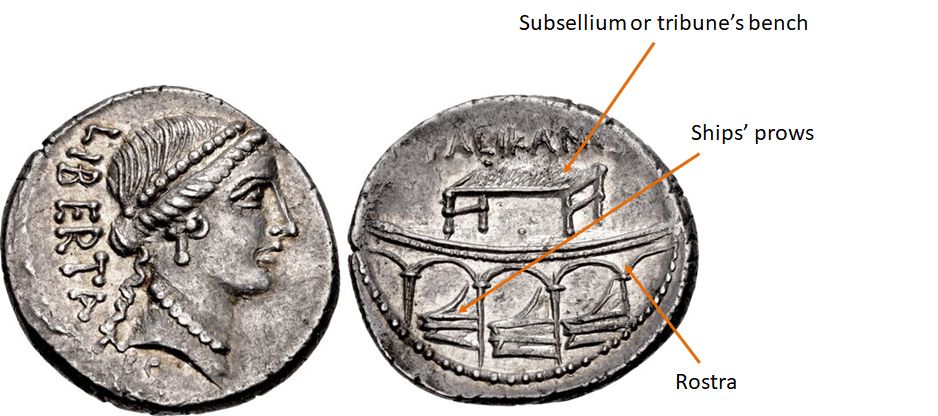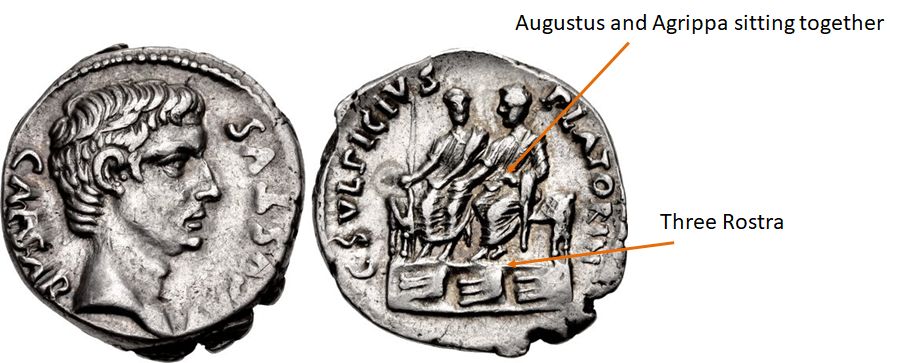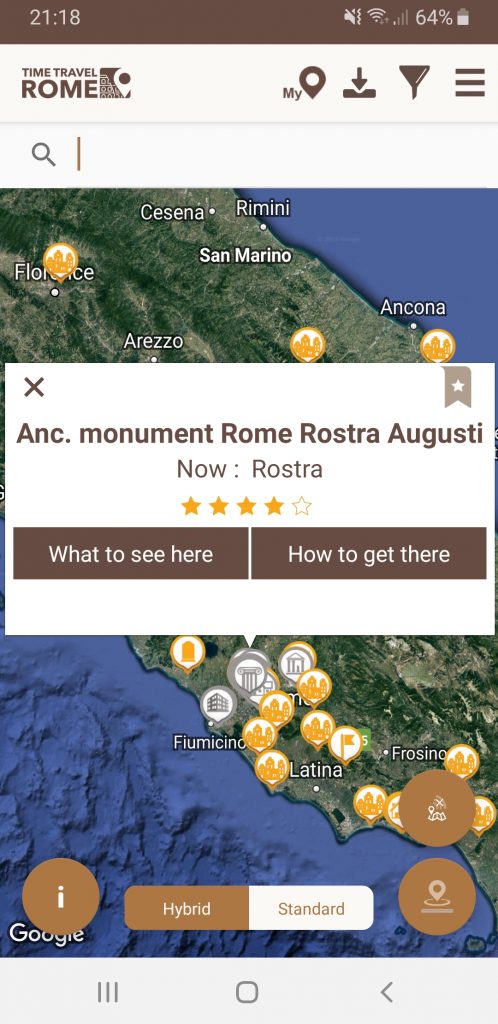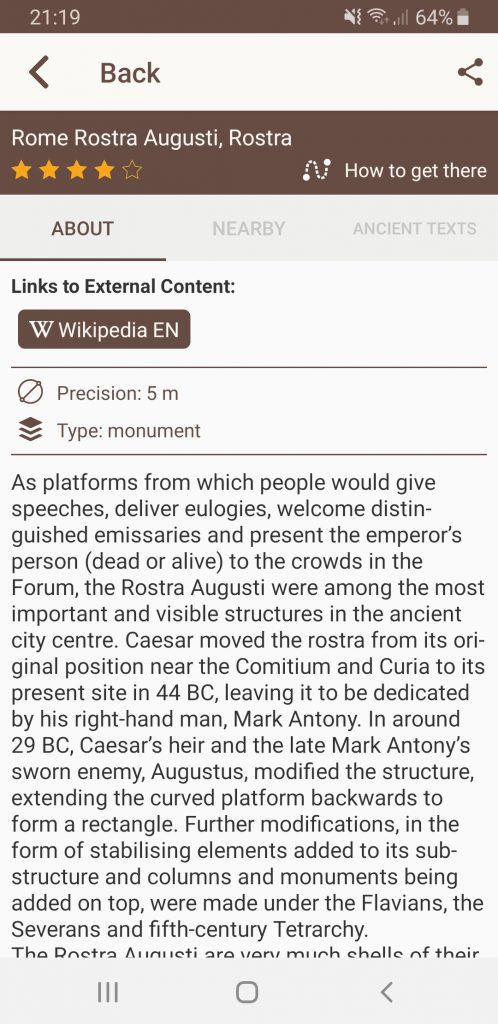We are starting a new series of posts dedicated to Roman coins. Our focus will be places and monuments that are shown on ancient coins. The first post is about the most emblematic monuments of the Ancient Rome: Rostra.
A rostrum was not a mere platform or podium for the talkers, but a true symbol of the Roman state. Here ordinary Romans found contact with their institutions and leaders. It was the place from which the voice of Rome was heard by its People.
One thousand years of history
Rostra have a very long history. The first Rostrum was constructed in Rome in the 6th century BC. It was rebuilt and enlarged over centuries but remained at the same site. Here Romans would give speeches, deliver eulogies, and present emperors (dead or alive) to the crowds.
The name “rostra” is more recent than the first construction. They have only been called like this since 338 BC, after the end of the Latin Wars which ravaged Italy. A consul, Gaius Maenius, seized the ships of Rome’s enemies, cut off their rams (or prows) – called rostra in Latin – and placed six of them upon the speakers’ podium. Rostra became symbols of Rome’s glorious past.

What is shown on this coin? The reverse of the coin depicts a rostrum and a subsellium – the seat of Tribune. The seat should not be confused with sella curulis, dedicated to curule offices, or the highest ranks in Rome. The reverse is likely to be dedicated to moneyer’s father who was tribune in 71 BC. He was instrumental in returning powers to the tribunes, which had been removed by Sulla. Note that the rostrum still has its original circular form.
Symbol of power
Julius Caesar moved the rostrum of Rome from its original position near the Comitium and Curia to its present site in 44 BC. It was dedicated by his right-hand man and most ambitious general, Mark Antony. In around 29 BC, Caesar’s heir, Augustus, sworn enemy of the, now late, Mark Antony , modified the structure. He extended the curved platform backwards to form a rectangle.
Further modifications, columns and monuments were added to rostrum under the Flavians, the Severans and fifth-century Tetrarchy.
In 29 BC Augustus built a second rostrum in front of the Temple of Caesar. The structure was also decorated with the prows of galleys. They came from ships captured during the great naval Battle of Actium. During this battle, Augustus’s fleet destroyed the forces of Marc Antony and Cleopatra. His victory cleared the way to his absolute power. Unfortunately, we have no traces of this second rostrum.
It is a pure speculation, but the coin below may depict the second rostrum as it then appeared. It was struck in 13 BC, after the second rostrum was built by Augustus. And only three prows can be seen here, while the “old” rostra counted six. The coin probably commemorates the renewal of Augustus’ friend Agrippa’s appointment as tribune. Unfortunately, he died prematurely the year after this coin was issued.

What is to see there now?
The Rostra Augusti are very much shells of their former selves. For millennia, they have been stripped of the very “rostra”—or ships’ rams – which gave them their name. However, the recesses into which these oars were inserted are still visible. Also, one can see the set of stairs of Caesar’s original structure on the western side. But even without its former imperial splendor, the remains of the rostra on the Forum are still a must-see: they played a pivotal role in some of the most important moments in Roman history.

Rostra foro romano. by Sailko is licensed under CC BY 2.5
Time Travel Rome-Rostra 
About
Authors: Alexander Meddings with contributions and additional edits from TTR.


